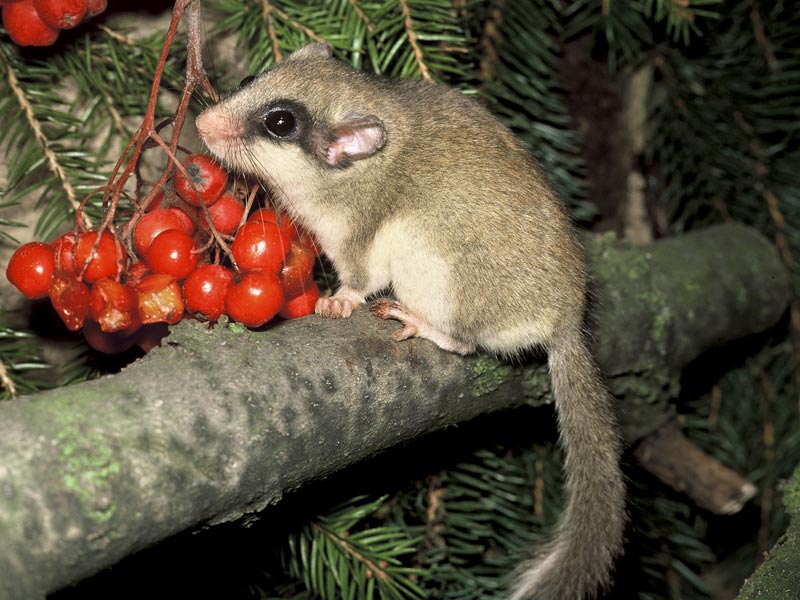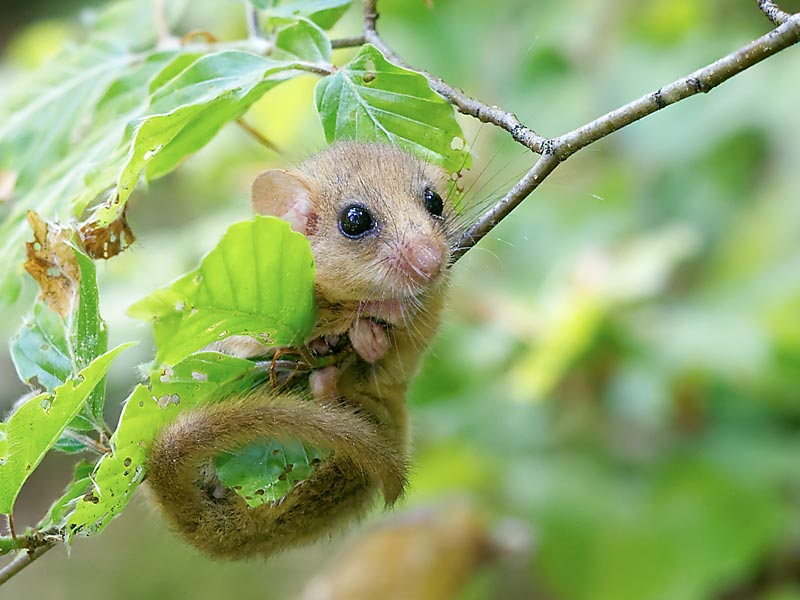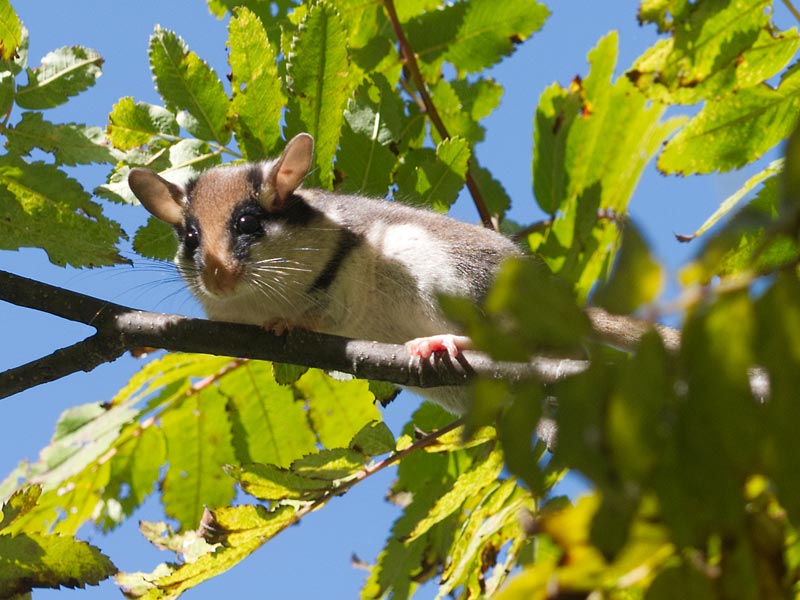(INTERREG-Projekt: ITAT4903-MP-015)
The forest dormouse Dryomys nitedula is a rare species of small mammal and is strictly protected as an FFH Annex IV species. Its westernmost distribution area can be found in the Terra Raetica.
A preliminary project in 2020-22 demonstrated that the forest dormouse utilises a wide range of habitats in the Eastern Alps. Furthermore, the proven altitudinal distribution in the Alps of approx. 800 m to 2,200 m shows the adaptability of this species. The present project ‘The forest dormouse and co. in the Terra Raetica’ investigates the apparent contradiction between preference for widespread (forest) habitats, great ecological plasticity and the supposed rarity of this species.
Various aspects of the biology of the forest dormouse such as food spectrum, habitat requirements, activity rhythm and population biology will be analysed in selected areas in the Ötztal Nature Park, the Stelvio National Park and the UNESCO Biosphere Reserve Engiadina Val Müstair. The results will be used to derive cross-border conservation measures for this species. In addition, a citizen science project with foresters is attempting to identify the presence of forest dormouse in the Kaunergrat Nature Park region. Through public relations work, the animal group of dormice/bilches is being made better known and sensitised. A temporary exhibition on dormice is being conceptually developed.
Objectives
- To clarify the food spectrum of the forest dormouse in order to assess food competition with other arboricolous small mammals as a possible cause of its rarity.
- Improvement of the sparse knowledge of the habitat types of the forest dormouse and other aspects of its biology (activity rhythm, population biology).
- Development/ derivation of suitable conservation measures for the responsible nature conservation authorities and nature lovers.
- Scientific monitoring of the citizen science project ‘Foresters search for dormice’ in the Kaunergrat Nature Park region for the possible detection of the forest dormouse in the Kaunergrat region.
- Raise public awareness of the forest dormouse.
- Development of a travelling exhibition.


















